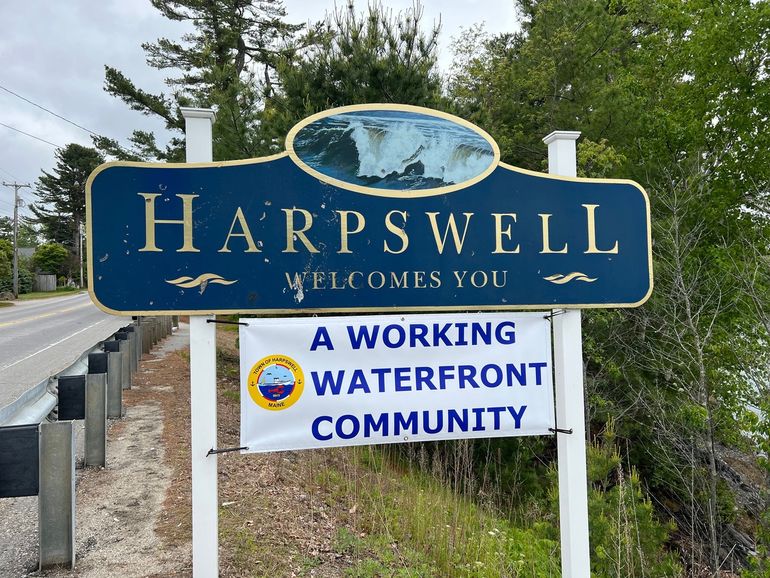A Harpswell guide provides insight into a working waterfront
 Courtesy / Maine Coast Fishermen’s Association
A new guide aims to educate Harpswell residents about living and working near the ocean.
Courtesy / Maine Coast Fishermen’s Association
A new guide aims to educate Harpswell residents about living and working near the ocean.
Hauling lobster, seining menhaden, digging for clams. Slippery wharfs, beeping forklifts, smelly bait trucks.
The waterfront is a busy place and Harpswell — with 216 miles of coastline surrounded by 200 islands, and 79 commercially zoned wharves — has quite a bit of waterfront shared by users that include commercial fishing, recreational boaters, swimmers, visitors and residents just enjoying the view.
Sharing those realities is the goal of a new guide created by the Maine Coast Fishermen’s Association, an industry-driven nonprofit working to restore the fisheries in the Gulf of Maine and sustain Maine’s fishing communities for future generations. The association’s office is located in Brunswick but the organization works with fishermen all along Maine’s coast, including Harpswell.
“Scuttlebutt: How to Live and Work in a Waterfront Community," is part of the trade group's larger effort to address a changing working waterfront, aimed at educating the community as a whole and newcomers in particular about living and working near the ocean.
Coastal gentrification in Maine has intensified in the last few years with an influx of out-of-state homebuyers, and lifestyle changes that are drawing families to Maine's quintessential coastal communities, the association said.
The pace of change is overwhelming some coastal towns and created pressure on the working waterfront.
The guide isn’t all about work. It offers tips such as how to make lobster stock and tips on how to deal with salt air, including putting rice in your salt and investing in a good dehumidifier.
The association partnered on making the guide with the Harpswell Heritage Land Trust, Holbrook’s Community Foundation, Harpswell Anchor and Cundy’s Harbor Library.
“‘Scuttlebutt’ is a great resource for those new to Harpswell so they can get to know and understand our local community,” said Julia McLeod, director of the Harpswell Heritage Land Trust.
Monique Coombs, the Maine Coast Fishermen’s Association's director of community programs, said working with community partners and sharing information about Maine's working waterfront and commercial fishing are an integral to the association’s mission to protect Maine's fishing communities for future generations.
The association “hopes that it might serve as a model for other communities,” she added.
“Scuttlebutt” includes information about the different types of fisheries in Harpswell, ways that homeowners can minimize their impact on the town’s coastal environment, tips for cooking local seafood, and information about preserving waterfront access for future generations. The title of the guide speaks to its intention to provide insider information, or “scuttlebutt,” to those living and working on Harpswell’s waterfront in order to foster a sense of community and shared values.
The guide was created following a series of panel presentations held over the past year. The presentations, “ Living and Working in a Waterfront Community: A Conversation Series,” aimed to prompt a dialogue for those seeking to learn more about the town’s working waterfront and included topics such as the seasonality of fisheries, fishing through the generations, access on the waterfront and etiquette on the water.
To access the presentations and articles, click here.
To access the guide, click here.









0 Comments